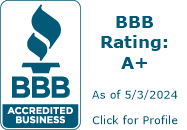Preparing students for success in a technology-driven world requires innovative classroom designs in the right environment.
Teaching and learning methodology is changing, and schools must adapt to these changes to stay relevant. Here are some tips for crafting a future-ready learning environment with innovative classroom designs.
What is a Future-Ready Learning Environment?
A future-ready learning environment breaks away from the rigid mold to create a flexible approach to education. It integrates technology to equip students with the skills necessary for success in the modern world.
These environments move away from traditional classroom layouts for a more dynamic approach to learning.
Future-ready classrooms feature flexible seating arrangements. They move away from the archaic design of row seats with a whiteboard on the front. These classrooms have movable furniture and interactive technology that encourage active participation of the entire classroom.
The setting tickles the brains of curious young ones. Students are no longer passive recipients of information but active learners engaging in collaborative projects. They can participate in problem-solving exercises for a hands-on approach to learning.
Benefits of Future-Ready Learning Environment
Here are some of the benefits in detail.
Encourages Student Engagement
Students become more motivated to learn through spaces that encourage active participation. Students are more likely to stay focused when the learning environment is stimulating. It helps them retain information more effectively.
Better Technology Integration
Technology plays an out-size role in modern education. Future-ready environments are incomplete without tools that support digital literacy. Tools like interactive whiteboards or educational apps make it easy to draw the attention of the generations of kids who grow up around technology.
Flexible Learning Experiences
These environments offer adaptable spaces that can be reconfigured to accommodate different learning styles and teaching methods. Students can work independently or collaborate in small groups.
You can adjust the class on the fly to create a layout for more extensive class discussions. You can modify flexible learning areas depending on the lesson or their individual needs.
Efficient Classroom Management
Well-designed learning spaces can improve classroom management. It allows teachers to focus on delivering effective instruction. Teachers can use flexible seating arrangements and interactive technologies to reach their students effectively.
Encouraged Collaboration
Team-based activities are a must in future-ready environments. They can help students develop valuable collaboration skills.
For example, they can work together on problem-solving exercises to learn to respect diverse perspectives and negotiate solutions. They also help develop strong interpersonal skills.
How to Design Future-Ready Learning Environments
Educators and school administrators should consider the following strategies to create effective future-ready learning environments.
Assess Current Conditions
Evaluate the existing facilities, curriculum, and resources to identify areas that need improvement or reconfiguration to support future-ready learning goals. Here are some ways to achieve this.
- Conduct surveys
- Hold focus groups
- Gather feedback from students, teachers, and parents
These ways help to understand the current strengths and weaknesses.
Determine the Skills
Identify the skills students will need to succeed in the future. Critical thinking, problem-solving, and digital literacy skills go a long way in getting students future-ready. Collaborate with industry partners to understand the skills that will be in demand. Design your classes to make it easy for you to achieve your goals.
Include Flexible Furniture and Layouts
Utilize movable furniture to create adaptable spaces that can be reconfigured for different learning activities and group sizes.
Consider modular designs that allow rearrangement and reconfiguration to support various teaching and learning styles. Your class must be a haven of inclusiveness to meet the needs of every student.
Future-ready learning environments should be accessible to all students, regardless of their abilities or backgrounds. These classrooms are beacons that promote equity in education. To accommodate students with special needs, consider color markerboards, ADA-compliant desks, lockers, etc.
Integrate Technology
Implement educational tools like interactive whiteboards, laptops, or tablets to support digital literacy. Your students can access online resources anywhere for a collaborative learning experience. It is paramount that the infrastructure must be adequate to support technology integration. Invest in stable Wi-Fi, proper charging stations, etc, for best results.
Encourage Collaborative Learning
Design spaces that promote student group work and peer-to-peer learning to develop communication skills. Designate areas that help students discuss their ideas freely. Teach them how to reach a common consensus in case of disagreements.
Encourage them to break down their tasks and share responsibilities with team members. It helps them learn the value of teamwork.
Equip Your Teachers
Equip them with the necessary training to utilize future-ready learning spaces in their instructional practices. Offer professional development mentoring to help educators stay up-to-date with the pedagogical approaches. Sign them up for opportunities to add new skill sets to their repertoire.
Let the teachers have a say in the layout of the classroom. Design the class to fit their teaching methods. The right tools make the educator more capable of crafting a future-ready learning environment.
Develop Community Partnerships
Collaborate with the local business community and organizations to teach students something outside their textbooks. Invite industry experts to share their valuable first-hand insights. It creates an authentic student learning experience.
The future of learning has already moved beyond books. Organize field trips or arrange for apprenticeships to give students a taste of real-world exposure.
Target Continuous Improvement
Assess the effectiveness of the learning spaces regularly and make adjustments as needed to support student learning. Creating future-ready learning environments is an investment in the future of education and students' success.
Work to improve the learning environments and cultivate a growth mindset. Students who feel supported in their educational journey can develop a drive for lifelong learning.
Implementing future-ready learning environments requires a commitment to continuous improvement. Work with stakeholders to create learning spaces that inspire students to reach their full potential.
School Outlet can be your partner in executing your vision into reality. We have a collection of innovative school furniture and learning materials. You can browse our collection of teaching materials or speak to our customer service between 8 AM and 8 PM at (877) 398-6449 or via email or live chat.



